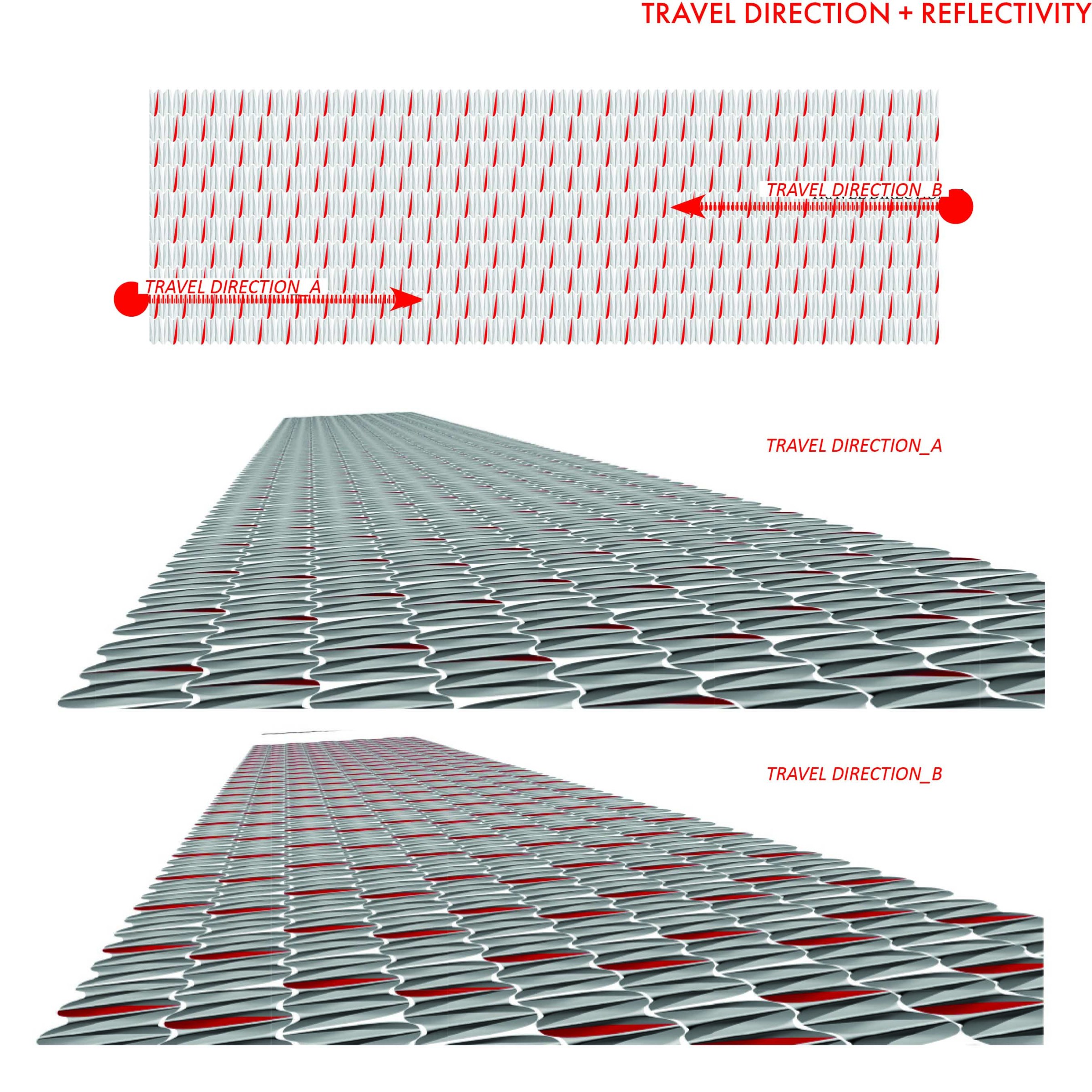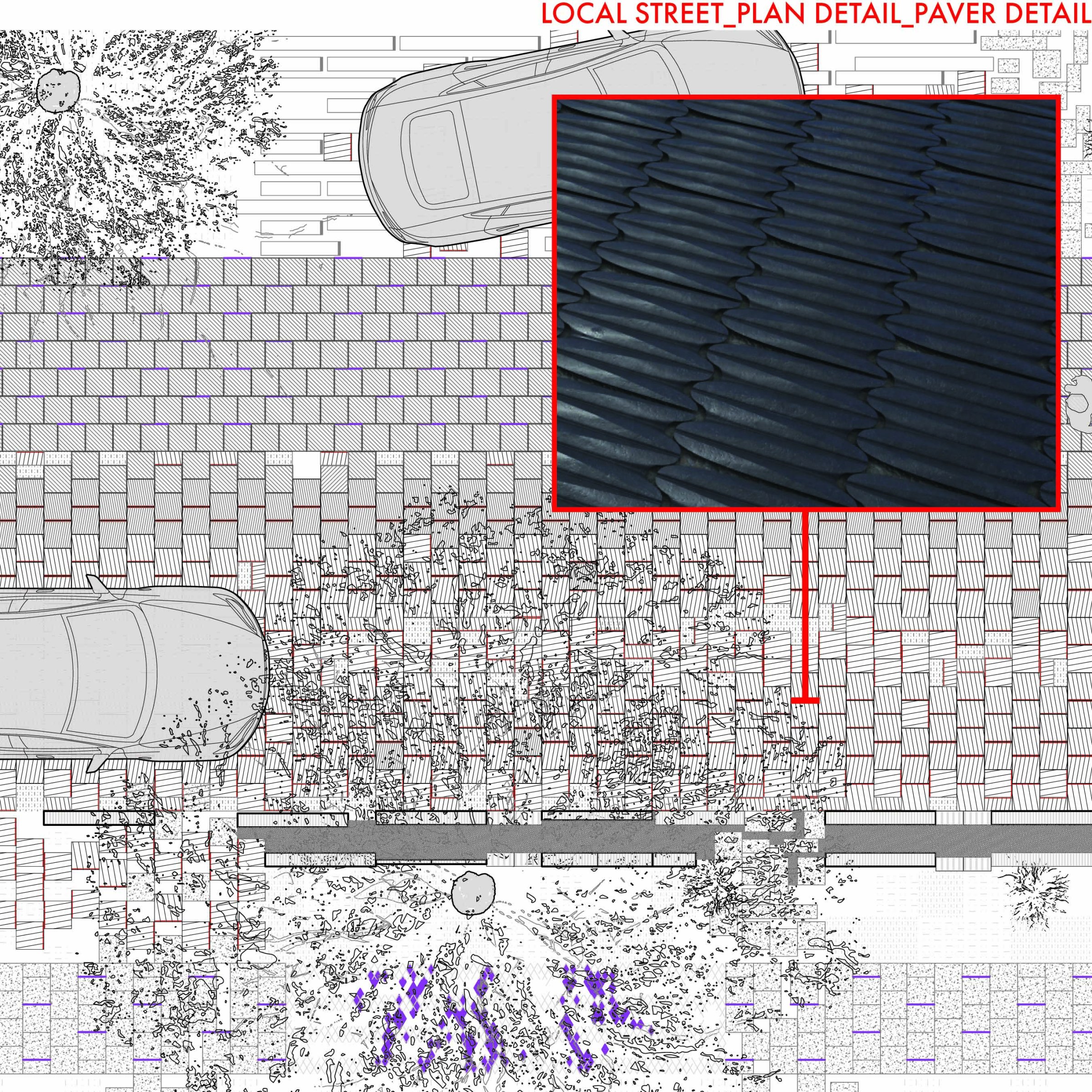Thesis Highlights
"No Royal Roads"

Charles jones, 2021
“No Royal Roads – Re-evaluating the Sanctity of Smoothness and Symmetry"
Smoothness, a predominantly preferred street surface condition, is a technical overcorrection in designing and constructing various urban street typologies. The singular pursuit of achieving smoothness in urban street surfaces, in the past and present, has inhibited the development of more resilient and ecologically adaptive solutions that are now fundamental to the long-term sustainability of low lying, coastal urban centers at greater exposure risk to aging subsurface infrastructure, subsidence, and episodic flooding. The average lifespan of a city street paved with asphalt today is twenty years, half the age of the average life expectancy for an American male one hundred years ago. Similarly, their degradation and collapse occur both in increment and in dramatic fashion.
As far back as the early 1900’s, paving city streets with wood block was still considered to be a comparable alternative to an emerging and extremely desirable paving technology - asphalt. These two forms of paving were celebrated for their smooth characteristics which helped alleviate the most persistent nuisances of rigid wheeled travel, acoustic reverberation, on-site adjustments, and cleanliness due to a lack of cracks following their installation. While wood may seem like a strange solution today, it has been a fundamental material in the development of modern technology and infrastructure through its abundance, transportability, and structural properties. The material properties fit perfectly well within the technological framework of the time. Asphalt today seems to have similar unrivalled advantages as a flexible aggregate binder that is the byproduct of refining crude oil, the most important energy source of the modern transportation. The rapid transformative pace of infrastructure innovation in this period could be experienced in a single generation from 1890 to 1920.
Most paving standards and specifications for city streets trickle down from federal highway paving standards which rightfully privilege efficient vehicular travel. However, city streets, more specifically local streets, do not support the same vehicular traffic demand and have supported a slower paced space for pedestrians to be in rather than move through for centuries. The sectional profile of the crown also finds its origins in paved roads dating back to the Roman empire for the sole purpose of shedding water efficiently. This characteristic is more flexible thanks to the aid of subsurface drainage networks. The rapid discharge of water, another heroic modern feat, is now seen as a detriment in cities like New Orleans where paving systems rupture due to unbalanced groundwater conditions and soil heaving. Lastly, hydrophobic material properties were more favorable to asphalt, a bituminous descendant known for its ability to waterproof vessels, was preferred for its ability to reduce moisture absorption.
This focus, on the efficient conveyance of vehicles and water, is maladaptive in addressing the rising social and ecological pressures streets face in coastal cities like New Orleans. New Orleans offers an exceptional terrain to evaluate the existing standardized street design in mitigating ongoing and future hazards within the scope framework of the current 2.3-billion-dollar road reconstruction project. Local streets make up 69% of all city-owned streets in New Orleans and are the focus of intervention with this hazard mitigation project. However, this means that about 30% of the entire city streetscape is being reconstructed with the same, century old, impermeable technology. This illustrates the fact that the greatest reinvestment opportunities in street rehabilitation lay in the local streets as they represent the most extensive physical network. Considering both the sectional profile and the surface condition of the street, this thesis proposes more adaptive considerations, that focus less on smoothness, should be incorporated into the process of redesigning street paving systems and their spatial configuration.
Faculty Thesis Director: Kentaro Tsubaki
WORK





